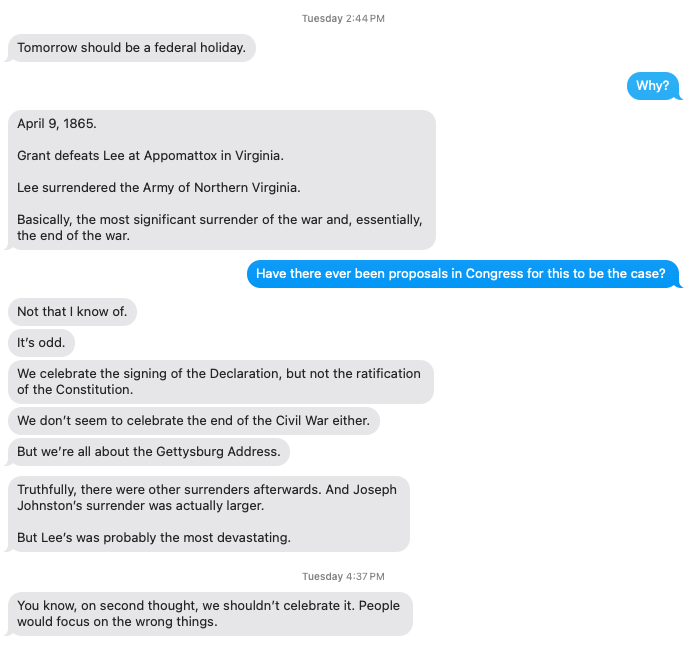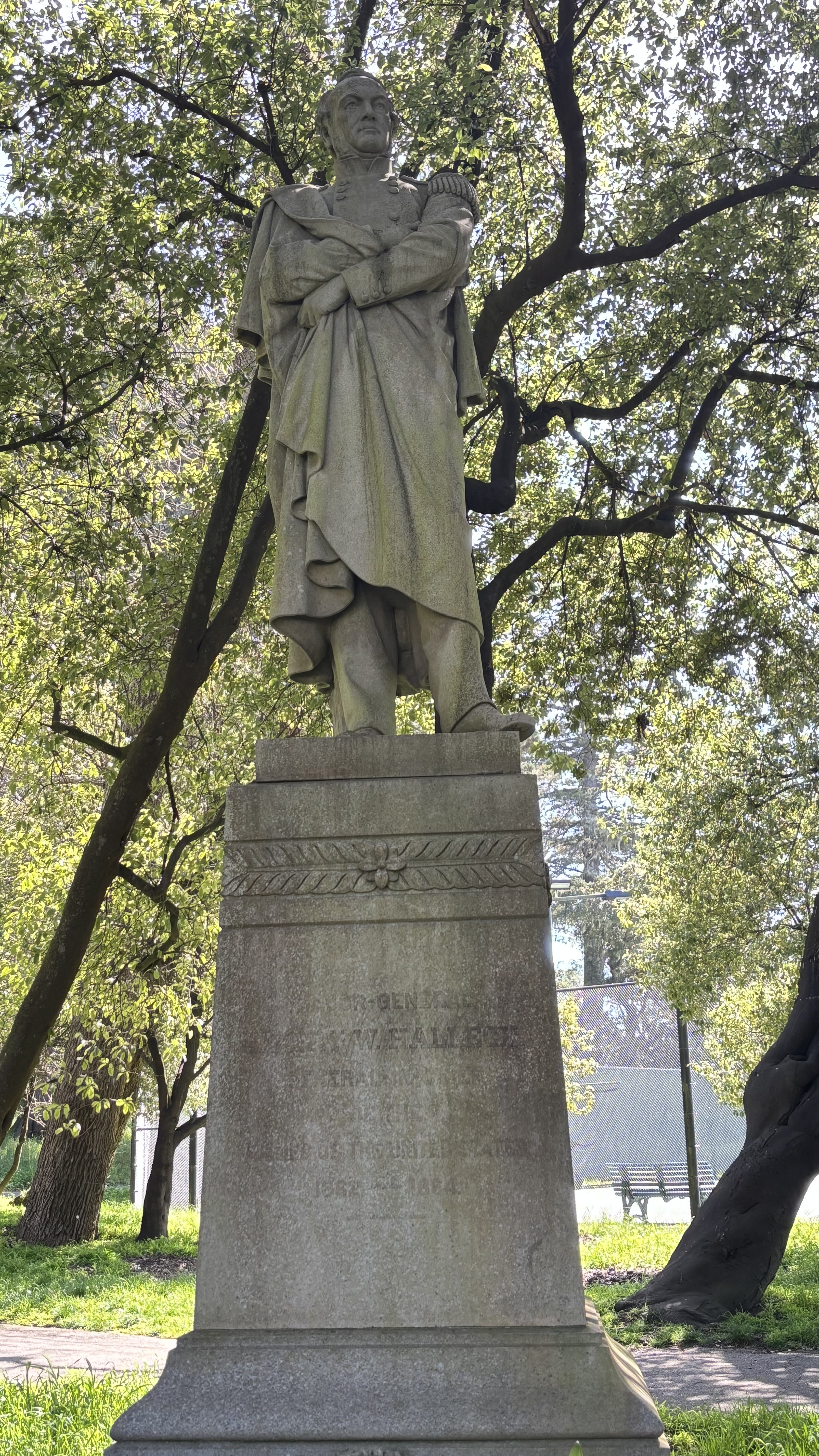Civil War ghosts, of all things
My friend Richard White is an historian by training, and by predilection. In another life, he'd be one of those tweed-jacket-wearing professors at a Bay Area liberal arts history department, expertly navigating the worlds of Steinbeck, Tolkien, and U.S. history.
Out of the blue midafternoon on Tuesday, he texted me: Tomorrow should be a federal holiday. As I had no idea what Richard was implying, I asked why. This is what ensued:

...and so Richard wrote what he did (see link in yesterday's brief post).
Thus inspired, I went out to look for any Civil War-era statues, monuments, or memorials here in San Francisco — of which there aren't many, as I quickly discovered (via Perplexity). There used to be a bronze bust of Ulysses Grant in the Golden Gate Park, but it was toppled and vandalized a few years ago by protesters indignant about the one slave Grant briefly owned. Some do take such indignation a bit too far, I think. I mean, these are the facts:
Ulysses S. Grant owned a slave at one point. During the late 1850s, while living on his father-in-law’s plantation in Missouri, Grant came into possession of an enslaved man named William Jones. It is unclear whether Grant purchased Jones or received him as a gift from his father-in-law, Frederick Dent. However, on March 29, 1859, Grant chose to emancipate Jones rather than sell him, despite facing significant financial difficulties at the time. This act of manumission was voluntary and not compelled by law.
[ Sarah Fling, in "The Formerly Enslaved Household of the Grant Family." ]
Not far from where I live is the Presidio of San Francisco, where a national military cemetery is to be found — and there, quite a few Civil War era soldiers, officers and civilians (military spouses), are interred. I've seen them myself, having had occasion to wander around there on a Memorial Day past.
 But for my Wednesday afternoon constitutional yesterday, I did trek to Golden Gate Park, where there's a statue of General H. W. Halleck, "...a prominent Union general during the American Civil War. He served as General-in-Chief (essentially the top military position under President Lincoln before Ulysses S. Grant assumed supreme command)." (Per ChatGPT.) This is the closest thing to a Civil War-era statue to be found in the environs of San Francisco these days (see image to right; click on it for close-up).
But for my Wednesday afternoon constitutional yesterday, I did trek to Golden Gate Park, where there's a statue of General H. W. Halleck, "...a prominent Union general during the American Civil War. He served as General-in-Chief (essentially the top military position under President Lincoln before Ulysses S. Grant assumed supreme command)." (Per ChatGPT.) This is the closest thing to a Civil War-era statue to be found in the environs of San Francisco these days (see image to right; click on it for close-up).
It's across from the Park's famous Conservatory of Flowers, and near the tennis courts, but is sort of hard to see from Kennedy Drive if you're not looking for it, as it's almost camouflaged under tall trees. It was kind of hard to make out the inscription on the base of the statue, weathered and uncared-for as it is. Per the usual, I snapped a pic, and asked ChatGPT if it could make out the words, which it rather easily did:
Major General H. W. Halleck
General-in-Chief of the Armies of the United States
1862 – 1864
I sat zazen for a while in the cool shade by Gen. Halleck (it was an unusually sultry spring afternoon!), contemplating what my historian friend had written:
"On April 9, 1865 at Appomattox Court House in Virginia Robert E. Lee was defeated. He surrendered his Army of Northern Virginia to Ulysses S. Grant. It was not the last victory over the traitors who tore our country apart because they believed human beings can be owned – indeed that some human beings were better off owned, that they were *meant* to be owned. Fighting continued into May of that year. But the defeat of Lee at Appomattox was arguably the death knell of the Confederacy. Perhaps if we had seen it and celebrated it for what it was at the time our nation would have moved forward instead of just moving on."
So there you have it, Rich. My own personal celebration of what you correctly assert ought to be a national holiday, were it not for the expected bozos who would focus on the absolutely wrong thing about the commemoration. ::chuckle::
Of course, HCR wrote about April 9th yesterday, too. You saw it, yes?